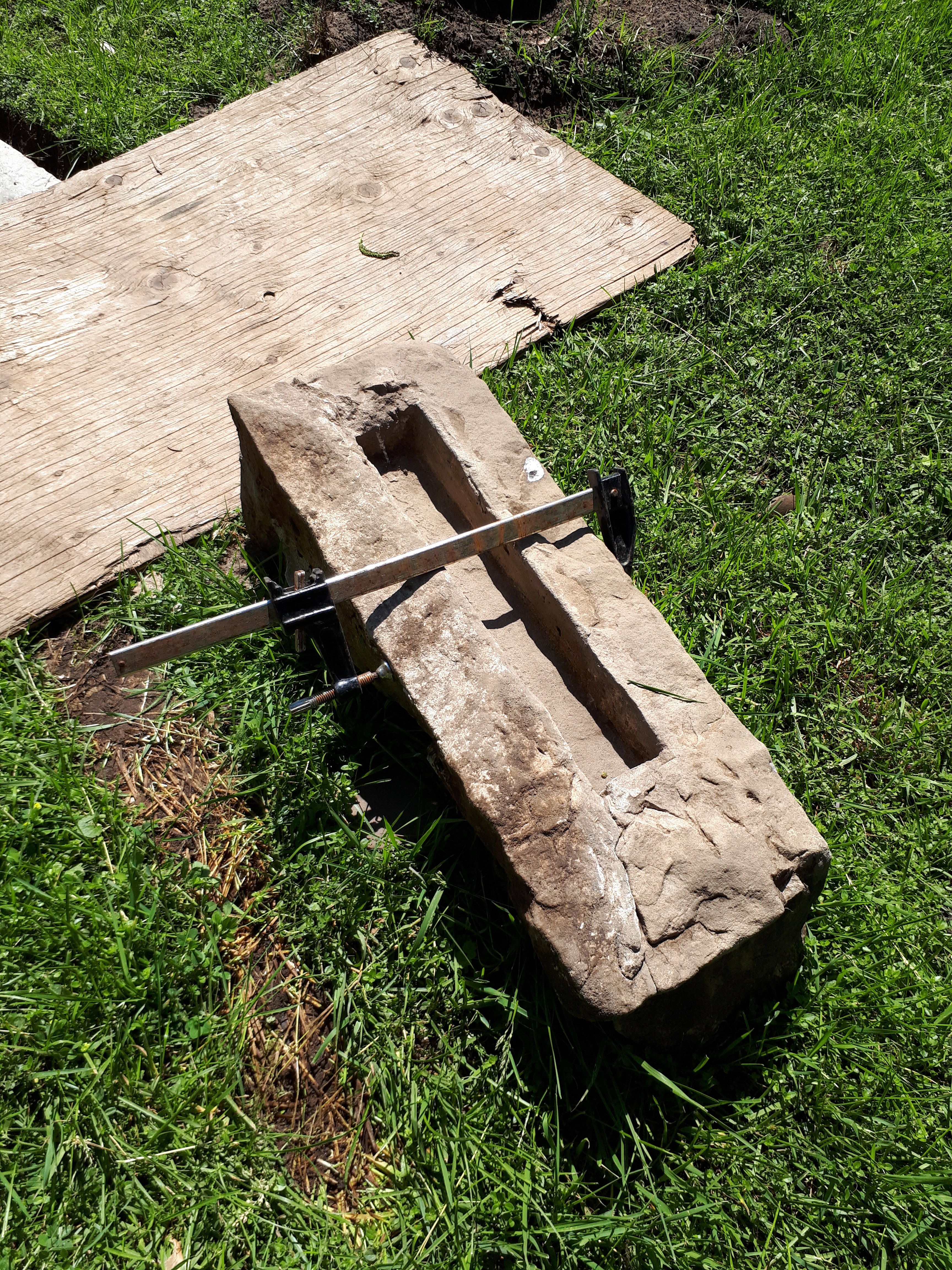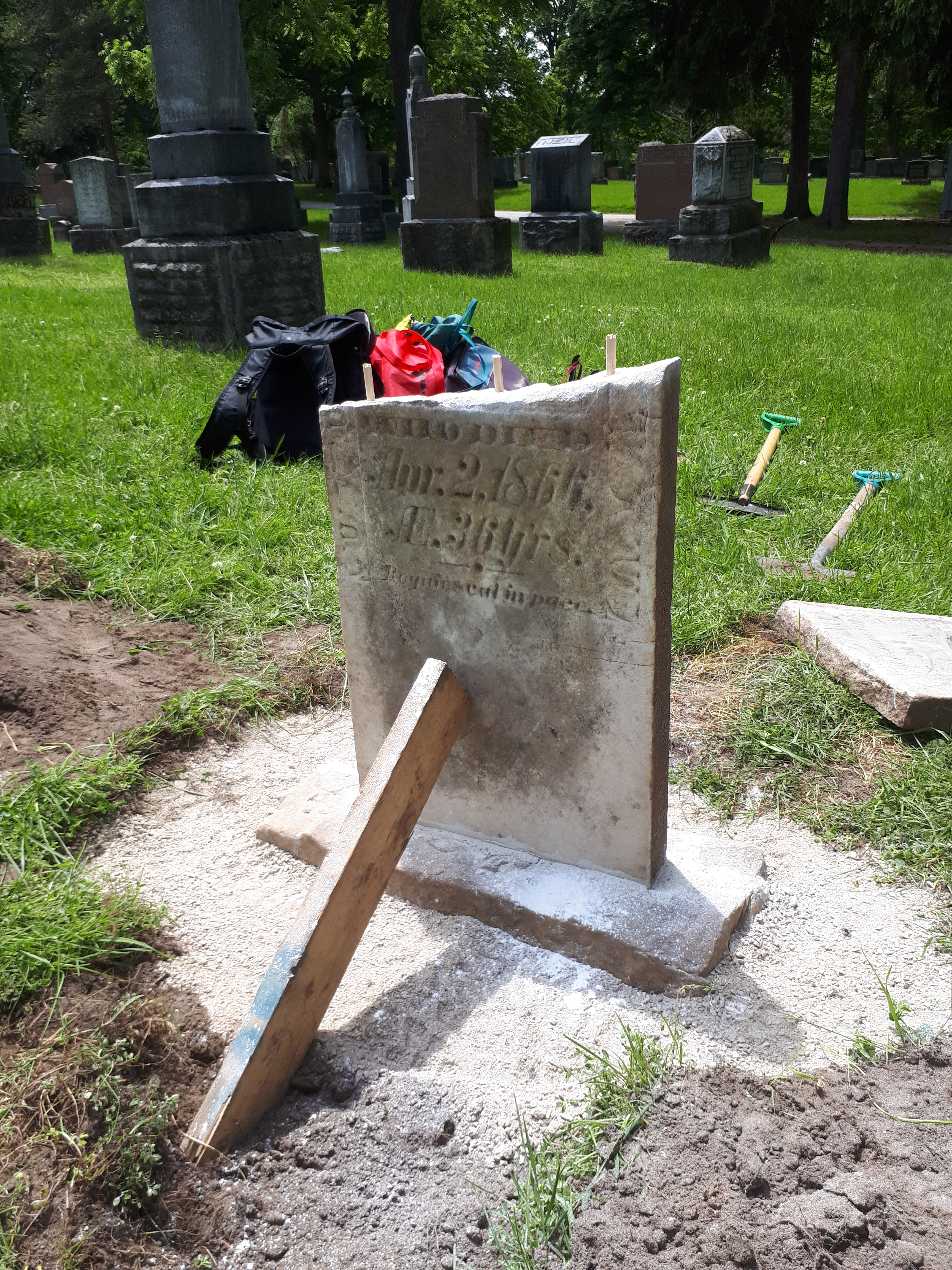Every cemetery is filled with stories, some large and dramatic (like Robert Cooper’s story, that we brought you last week), and some are smaller. Some stories are hard to tease out, such as those of the everyday people of London, whose names might not have been written in lights, or had articles written about their achievements. We try to tell their stories through the conservation of their gravestones, as we unearth them, clean, and stand them up so visitors can see them too!
Today’s gravestone story is one of these stones. We don’t know much about the individual named on the stone, but through the restoration of his grave…and it was quite the restoration project, we were able to bring his name to light once again, and learn a little bit about the individual behind in in the process.


The gravestone of John Murphy was nearly completely buried below a mat of fine grasses and wild oregano, which gives section K a lovely aroma as you wander through the area. After we pulled back the sod, it was discovered that the stone was actually in fairly good condition…meaning that it was only broken in two pieces, rather than a million! That’s an easy fix, right?? Right! The base of the stone wasn’t long enough to bury right into the ground, so we probed around for a key. Luckily, we actually hit something below the gravestone itself, and quickly moved it out of the way!

To our great joy, there was a key below the stone! It was made from sandstone and the most irregular shape we’d seen so far. The top of the key was rough, and as we pulled it out of the ground the entire stone split in half in our hands! This was a very good example of the devastating effects of biological weathering on stone. Something that we typically think of as so strong and long-lasting can be eaten away by the roots of tiny plants, force the stone to split. Luckily, there was a remedy for it…in the form of Adex (?), a construction adhesive. We know that this material isn’t exactly conservation-savvy, but sometimes it works in a pinch, especially when you are repairing the base of a stone and really need it not to fall over again…or split in two!
Once we were certain the key had set, we placed it within a bed of limestone screening (for support and drainage, you know the drill), and pointed the remainder of the crack with limestone mortar to protect it from moisture and from sediment settling inside and providing a place for plant life to thrive. Sorry plants! To set the gravestone in the base, we added more mortar to the slot in the key and squished the bottom of the stone into place, checking to make sure it was level before bracing it with boards and leaving the stone to set overnight.


The next step was to drill holes to set the wood dowels into, and attach the top of the stone! We switched from the lipstick you may have heard about earlier to pencil and a set of calipers to carefully measure in the location of each dowel hole. This ensures accurate results without exposing the soft, absorbent marble to a staining substance such as lipstick. Luckily for us the marble was fairly soft. The stone aligned easily, and we had it set in record time (with a waiting period overnight to make sure the stone was set), with mortar to fill in those pesky cracks.

The stone features clasped hands bidding farewell, with delicate foliage in the top corners and a border of abstract leaves or peddles down the sides of the inscription. It reads:
IN
Memory of
John Murphy
WHO DIED
Apr. 2. 1866
AE. 36 yrs.
-.-
Requiescut in pace
John Murphy’s stone doesn’t tell us much about him, but his death date allows us to look him up in the St. Paul’s burial records book here at the cemetery. Our records show that he was buried the following day, on April 3rd, 1866, and that he was 40 years old at time of death. Either our records got his age wrong or he was lying about his age a little? The records also show that he was from London and worked as a tavernkeeper. We only wish we knew a little more about him…like what tavern he worked at!

Unfortunately, the 1861 Canada (Ontario) census does not list anyone named John Murphy that matches up with either potential age provided by his gravestone living in London at the time of the census, and he died before the 1871 census. It is possible that John arrived in London after 1861 from another part of Canada or another country, and died before he was included in the official census records. However, with the resetting of his gravestone at least visitors to Woodland will be reminded of his name when they pass by.
If you are interested in visiting Tavernkeeper John Murphy’s grave, head to Section K beside the crematory!
As always, thank you for your support of our heritage work at Woodland!
Thank you for following our progress so far this summer! Keep an eye out for more information on our walking tour, which will be held on July 6th, 2019.